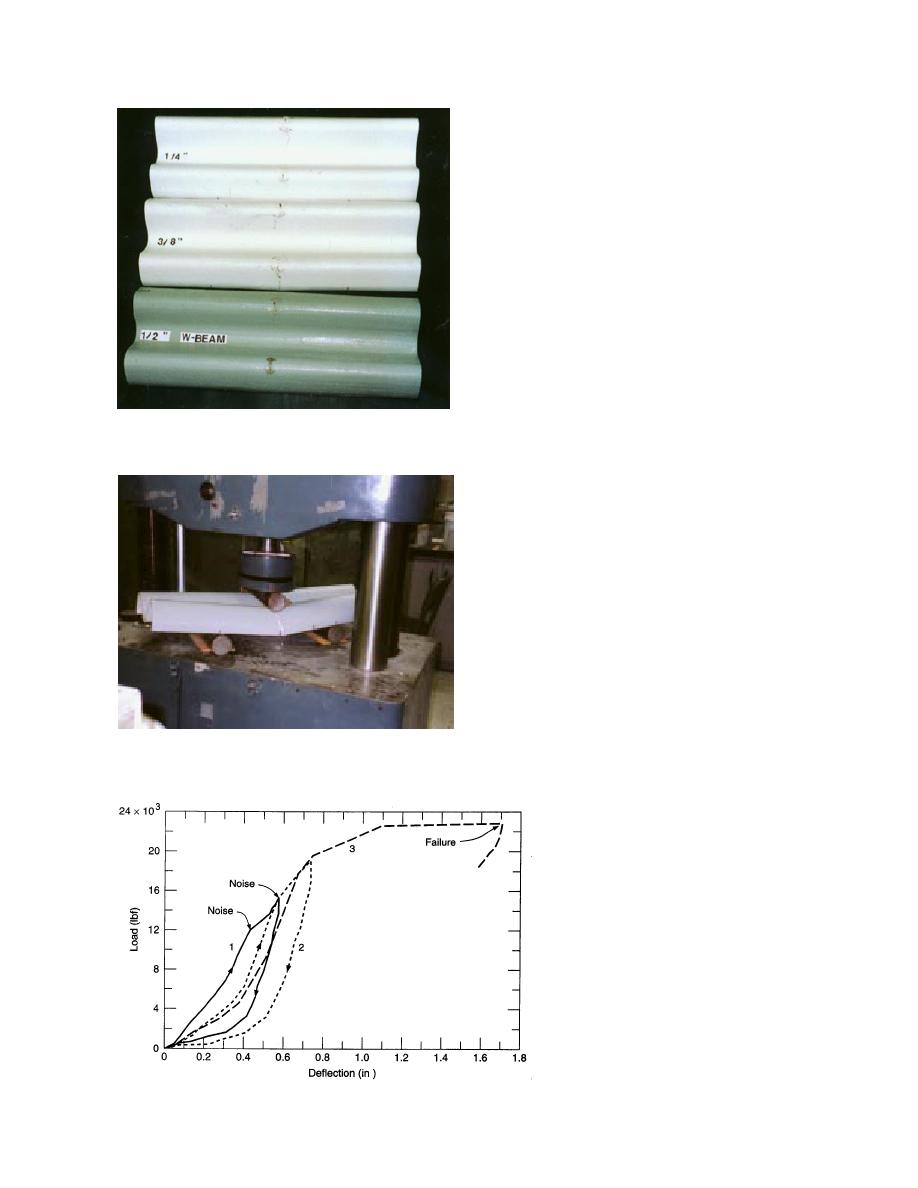
deflection characteristics for the four samples
plotted in Figure 28 clearly show large hyster-
esis, indicating energy absorption by internal
cracking. However, the beams maintained con-
siderable flexural stiffness after cracking, and
they bounced back to their linear shape after
the load was removed. In fact, the samples
shown in Figure 26 were all fractured in the test,
but the cracks practically closed on removal of
the load. Figure 29 summarizes the load deflec-
tion data from all samples. Failure strengths and
stiffnesses of the 6.35-mm (0.25-in.), and 9.53-
mm (0.375-in. beams were considerably lower
than those of the 12.7-mm- (0.5-in.-) thick beams,
and the thinner beams obviously deflected much
more for a given load.
Table 5 is a summary of the critical data from
these tests along with the data initially obtained
Figure 26. Three FRP W-beam samples for three-point
for the steel W-beam. Table 5 clearly shows that
flexure tests.
the 12.7-mm (0.5-in.) W-beam exceeds the per-
formance of the steel W-beam in yield strength
by about 42%, but its flexural stiffness (EI) is only
34% of that of steel. It also weighs approximately
87% of the steel beam. If a lower stiffness is
acceptable, the 12.7-mm (0.5-in.) W-beam can be
a candidate for a one-to-one replacement of the
steel W-beam. The 9.53-mm (0.375-in.) and 6.35-
mm (0.25-in.) W-beams obviously have much
lower flexural stiffnesses, but they also have
about 86% and 43%, respectively, of the strength
of the steel beam. Their weights are also only
68% and 47%, respectively, of the steel beam.
Cold weather exposure test
Although this exploratory development of an
FRP W-beam guardrail was far from viable and
Figure 27. Three-point flexural test configuration for the
acceptable as a proper guardrail for highways,
FRP W-beam samples.
Figure 28. Load-deflection characteristics
from cyclic loading of 12.7-mm (0.5-in.)
thick W-beam.
.
21



 Previous Page
Previous Page
